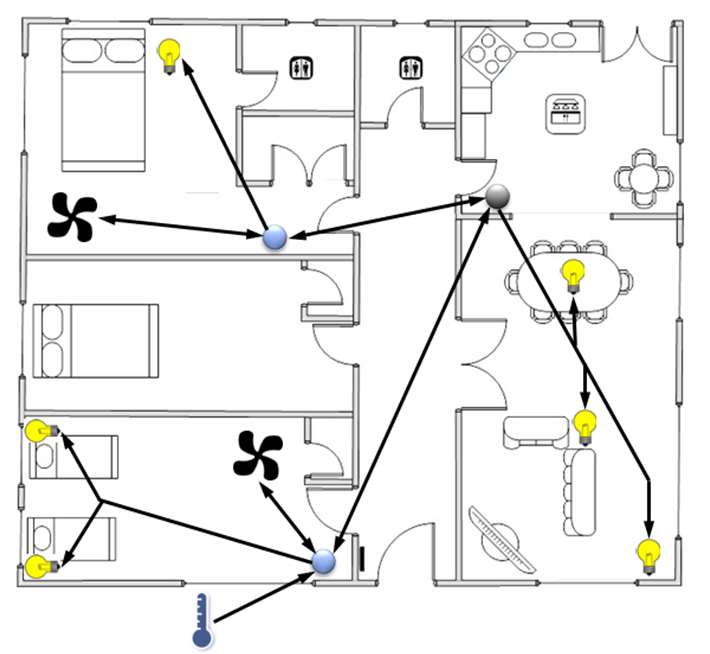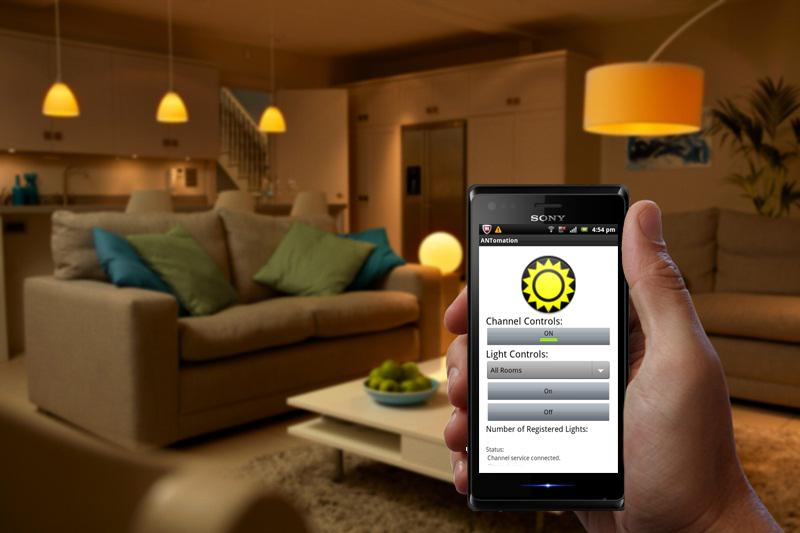Taking remote control
How a practical mesh network solution can simplify home automation and energy management. Mike Paradis, Global Sales Manager for ANT Wireless, explores this in detail in this ES Design magazine article.
Traditionally, home automation systems have been AC powered and implemented during the construction of a home, giving homeowners limited options for updating their homes without ripping up the walls and re-wiring the entire electrical infrastructure. Due to this lack of flexibility, home automation applications have fallen sharply short of their intended consumer acceptance. To date, they have failed to gain market acceptance, primarily due to the complexity of installation and use. Now, with flexible and easily established ANT network connections and cell phone connectivity, there is a real opportunity for home automation to take off. Consumers now see the potential of simple solutions that can be easily retrofitted to a home and changed on the fly. The only way to meet this consumer demand is to create intelligent, flexible, low-overhead wireless solutions. That is what simple wireless protocols bring to this market segment;
ANT networks, being simple to set up and use, offer a series of advantages when compared with other current wireless options available. This functionality enables the creation of an optimal home automation system such as mood or display lighting control.
ANT’s practical mesh network capability ensures that multiple points can be controlled by multiple controllers. The inherent ad-hoc nature of the protocol lends itself to supporting the varied and changing requirements of a home automation network. Additionally with ANT, a user can have one controller connected to many sensors, many controllers connected to one sensor, and all combinations in between.
The protocol offers many synchronous and asynchronous connectivity options that can be enabled through a simple command interface. As ANT provides flexible basic networking building blocks, product developers are able to combine different channel types required for a particular application, enabling practical mesh topologies.
Channel sharing
The ANT+ Controls Device Profile uses an addressed multi-drop channel option called a shared channel, supporting multiple levels and can address over 250 devices in up to 16 zone levels (this can be expanded to over 65,000 devices). By setting the zone that the individual device addresses in the application, a user can turn on, dim or turn off groups or individual lights in the facility from any room, all from a smartphone. ANT+ device profiles define the channel types and the data it communicates between wireless nodes on the network for a variety of use cases.

Figure 1: An example of a mesh network in a home automation application
To make application development as simple and easy as possible, ANT offers a variety of embedded, mobile and PC resources such as the ANT Android SDK, and ANT+ Plugins. These available ANT/ANT+ tools for building Android apps ensures optimal device connectivity allowing developers to focus on the functionality of their applications knowing that the ANT/ANT+ integration will just work. This drastically reduces development time.
Along with mobile devices that have ANT natively built in, there are also a variety of products available such as ANT USB sticks and iPhone dongles that allow users to connect to ANT+ devices from virtually any mobile device.
Proximity pairing
ANT enables on-the-fly ad-hoc connections to be created simply with built in proximity pairing. Because each ANT device allows for the creation and independent operation of multiple transmit or receive connections on each wireless node, it is possible to create new connections to any other ANT device in the network at any time. With proximity pairing, one node need only come within a specified range of another to establish a new connection.
The flexibility of the ANT network allows every connection to be optimised for power consumption versus latency. Typical sensor applications, for example, are able to operate for multiple years on a coin cell battery. To get an exact indication of power consumption for your use case, visit www.thisisant.com and find the Power Estimator tool in the Developer section.

Figure 2: Tools provided allow applications running on connected devices to control nodes in a network from anywhere in the world
As a wireless protocol, ANT is available on ICs supplied by several world-renowned semiconductor companies including Texas Instruments and Nordic Semiconductor, as well as on RF modules built with these devices. The most recent offering is the nRF51422 device from Nordic Semiconductor, launched to the market in volume early in 2013. The industry’s first ANT System on Chip (SoC) solution embeds the newly-enhanced ANT protocol with advantages in power, size, cost, speed and security built directly into the protocol layer. This solution integrates a 32-bit ARM Cortex M0 CPU with 256KB flash + 16KB RAM, with analog and digital peripherals. Benefits will reach consumers in the form of new products with even longer battery life, expanded functionality and security, further simplified operation and overall value.
Wireless modules using the nRF51422 chip are currently being developed, including the N548M8CB module to be supplied by Dynastream Innovations. The module is 9.8mmx14.0mm in a LGA package offering 24 GPIOs, of which six can function as analog inputs. The module will be certified in major markets and become available by the end of 2013.


